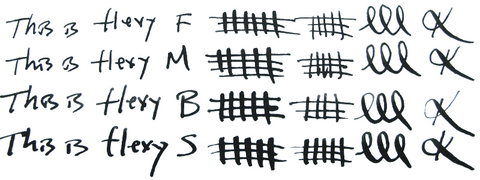Danitrio Tame-nuri in Black on Hyotan Fountain Pen
Starting at $270/mo for 6 month no-interest installments, 10% down using 
Learn about our Payment Relief Plan. |
|---|
✓ 100% Genuine Urushi
✓ Contains the Maki-E Red Seal (Highest Quality of Maki-E Art)
✓ Hand-painted by highly-trained Japanese Artisans
Tame-nuri describes the “clear” urushi coat that is applied to allow for an individual to see deep into the layers of the pen. This pen contains the traditional thinner edge around the cap and the barrel, allowing the the base color of the pen to be revealed.
To produce the tame-nuri effect, the nuri-shi (artisan) will apply suki-urushi (clearish brown) on the outer layer of the pen and then will burnish it. Suki-urushi is made up of an extremely high quality refined urushi. The high quality refinement involves a paper filtration process (also known as urushi-koshi) using Yoshino-gami (hand-made paper filters) which is a progressive filtration process where the filtration starts with binding pieces of Yoshino-gami together and squeezing out the urushi through them, followed by repeating this activity again but instead with larger quantities of pieces of Yoshino-gami bound together for finer filtration.
Tame-nuri creates an amazing depth on the pen that no other material can replicate. As soon as one sees these pens in person, they will immediately know why nuri-shi (artisans) believe urushi is living. Tame-nuri allows for pens to come alive as it has transformational abilities with its material being able to change colors over time – tame-nuri does not deteriorate like most materials when exposed to light, but instead it evolves gracefully into another color. If you have never picked one of these bad boys up before, definitely look for these at the pen shows because nothing is like seeing these pens in person, camera photos just don’t do it justice.
Reference Article:
What is Tame-nuri finish on an urushi pen?
About Danitrio Hyotan Fountain Pen Series:
The Hyotan in Japanese means "Gourd" or "Calabash", which is a fruit that can sometimes come in an hourglass shape. This series of pen does come in the hourglass shape; in the US, collectors of Danitrio pens have coined it the Mae West, one of the biggest Hollywood stars in the twentieth century known for her hourglass figure.
Nib Details:

This pen is furnished with an 18k Gold, two-toned #6 nib. What has been described by many Danitrio collectors as the fireball nib is an image of “Kaen-Kohai” which is a flame-shaped halo of “Fudo Myoo” (Acala, the God of Fire). This halo is commonly painted on the back of Japanese Buddhist statues.
An UrushiPen.com representative will contact you to confirm nib tip size preference (fine, medium, broad, or stub) following the placement of the order.

Technical Specification:
| Cap Length | 65 mm (2.56") |
| Cap Diameter | 21 mm (0.83") |
| Barrel Length | 110 mm (4.33") |
| Barrel Diameter | 19 mm (0.75") |
| Pen Length (Closed) | 147 mm (5.79") |
| Pen Length (Posted) | Cap does not post |
| Net Weight | 35.5 g (1.25 oz) |
| Net Weight (w/ink) | 37.2 g (1.31 oz) |
| Filling System | Cartridge/Converter |
About the Artisan:

This pen was hand-painted by Koichiro Okazaki (Kogaku). Born in 1959. He is a renown Maki-E artisan in Japan and considers himself wholeheartedly traditional when it comes to Maki-E. He is recognized by the Japanese Government as a Dento Kogei-shi, which an honorary title meaning "master of traditional crafts" and is given only to a select few artisans who have a significant contribution to their craft. Many of his Maki-E works have been accepted and rewarded at national art exhibitions. He had learned Maki-E from a master and became an independent artisan 5 years later. He was recognized with Kao (authorized monogram) by Kuda Munenori of Sado Omote school in 1991. He performs Maki-E on many traditional accessories, hair pins, combs, jewelry, and fine writing instruments.



